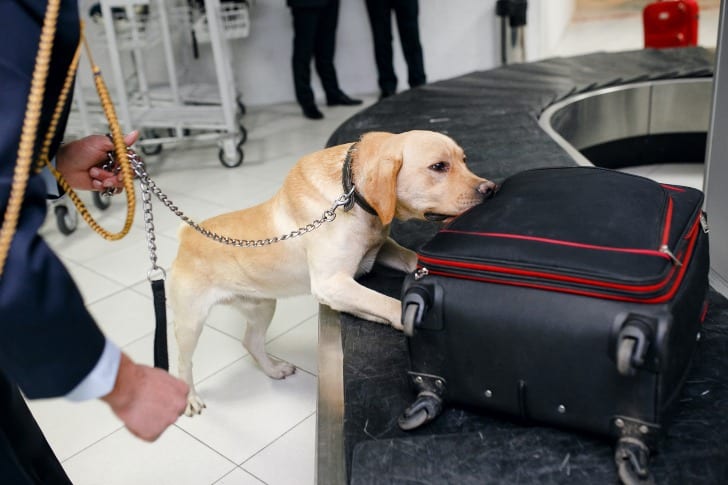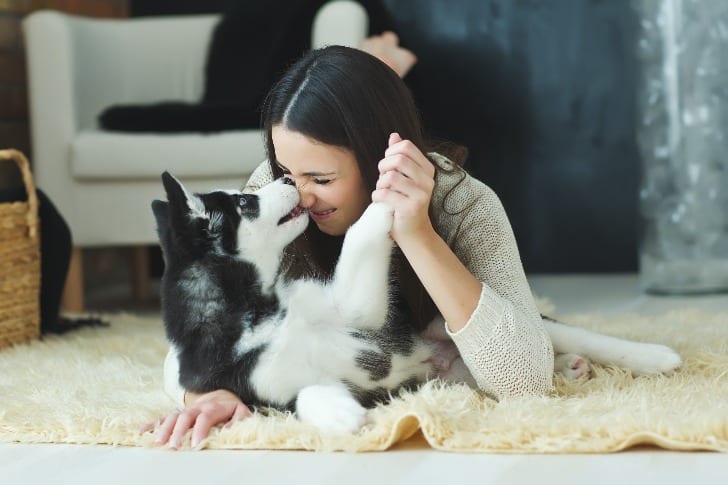
Anke van Wyk/Shutterstock: Different types of trained dogs have different preferences
For centuries,a dog has been well-known as one of the animals closest to humans. Despite their adorable looks, they are also intelligent and capable of doing various tricks, from simple to sophisticated. Don’t believe us?
Watch Beethoven (1992), Air Bud (1997), and some other blockbusters where this species is among the main cast!This was possible because all of them are highly-trained individuals–commonly known as working dogs.
What Can Be Considered As A Working Dog?

Dragosh Co/Shutterstock: A Working dog sniffing out a suitcase
In general, any canine that has undergone extensive training and carries out heavy burdens such as detecting dangerous substances or herding stocks is qualified to be called a working dog. But to make one isn’t that easy!
Only some specific breeds are genetically capable of doing those things, not to mention they need special demeanor and excellence to become a working individual.
Do you know that there are actually two different types of working dogs? Scientists have divided them based on their breeds: cooperative and independent.
A cooperative working-dog shares a harmless and needy trait,as the result of a long-haul evolution after being domesticated for thousands of years. On the other hand, many of the independent working dogs’ traits oppose the former type.
Albeit their obedience and loyalty, they tend to be more ignorant and share the characteristic of a lone wolf.
Inequity Theory
Although the classification has existed for a long time, some specific behaviors supporting the hypothesis are yet to be proven. The most famous one is about inequity.
According to the experts’ speculation, cooperative canines tend to get jealous whenever the owner doesn’t provide equal love, yet independent working dogs don’t seem to care about that. Well, recent research shows that this theory is debatable!
A new experiment conducted by Jim McGetrick examined the difference in responses between cooperative and working breeds every time they were treated differently. Researchers provided both types of animals with the same tasks, and only one will be awarded.
The result was pretty shocking – it is indicated that both cooperative and working dogs despise inequity, just like humans!
Differences Between The Classification
However, it doesn’t mean that scientists have failed in their research. The experts found another spark of evidence that supports the classification of this species based on the behavioral act. The cooperative dog showed closer adjacency with the owners, something that the independent breed lack.
But don’t think badly of the independent working dogs! They are still loyal, fast, highly adaptable, and smart.
Conclusion: Which Type Should I Adopt?
We bet that this question pops up after you read the above sections. The answer is: it depends, as every breed have their specialty.

Nina Buday/Shutterstock: Choosing the right dog
Nonetheless, if two different dog types are able to conduct the same task, it is better to choose whoever suits your taste and personality. Some people prefer a more calm, independent dog, yet others will love to have a pet who always follows them everywhere.
Shortly, choosing a pet is based on preference, as long as they can execute the job and solve the problem smoothly. So, which type do you prefer?




